Text
Evaluation Statement
As part of my Unit 1 for BA Textile Design, I am required to keep a blog to document my learning activity as one of the teaching and learning methods. The blog will be the assessment evidence to gauge my activity at the end of this unit. I started a new blog for unit 1. This is for help develop reflective and self-directed study. It is easy to use and personalise, including adding text, images. Finally I will keep up and running with my blog.
My blog can be a social networking only for my university’s life, typically to shows any texts, images, video and links to other blogs, about the textile design or something attract me.
After I came to university, self-reflection is an important aspect of learning required. It helps me situate and align my learning against my ambitions and aims. Also it helps me think about what I have learnt and how can I improve it in the future. As art and design student, I have to know, things change quickly in the world of specific vocational skills, I will also need ‘ higher order’ cognitive skills such as reflection to enable me to become a critical and adaptable practitioner. It also helps develop skills related to digital literacy.
The second point about the blog to help me in my university life is the reflective cycle that is a cyclic process of experiential learning devised by Kolb and Fry (1975). When I doing my project, it helps my to practice, also it gives me a way to thinking about the activity I have done, after answer the questions and analyze me to decide how to move forward, it also organize further activity, events or experiences based on reflection and analysis.
When I wrote the first blog in October, it just a few pictures, I didn’t know how to write blog, if it shows only my feeling I through just pictures is enough. However, time move to the first lecture task, I tried to write some my opinion in blog with pictures, even just some sentences to describe the photo. All helps me to improve my English skill. Sometimes visual language is strong then others, as seam as my blog, I like to use visual language first, then up to another blog to describe it. I think the emotions can be useful if an image made me nervous. For the last lecture task in last term, I didn’t read a lots, the thing was I couldn’t understand what the task ask. I should do more reading when I get new task or come to a new area in the future.
The feedback helps my to understand what I should improve and the thing I should keep it. As seam as I up the blog, it helps me to look back of what I did, and try to mark my worst.
Blogs are like a journal they encourage me to write down my experiences, in effect making my life more explicit.
0 notes
Photo
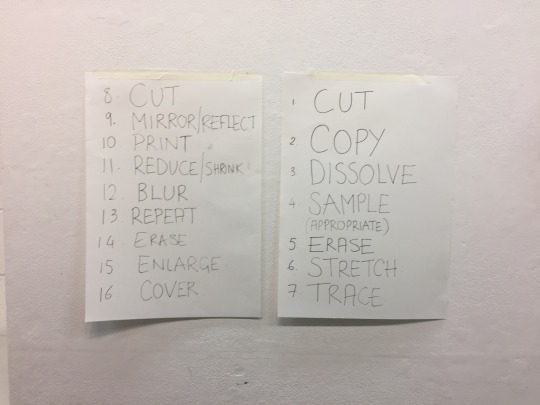



Drawing Workshop
Today's drawing class would not be seam as Tuesday, as you can see my photos, all drawing should links to the word. Such as "cut", "copy" and "dissolve". We get all concept from magazines, each person can only choice 2 pages, and did the black and white copy.
To explain a word by spack is easy, however if I want to explain a word only by my drawing seam as today, it may difficult.
The most difficult part in today's workshop was the word "cut", beacuse in my opinion, cut its really easy to explain by a movement, but for drawing, I couldn't find the way. At the end I only cut few shapes from magazine.
0 notes
Photo



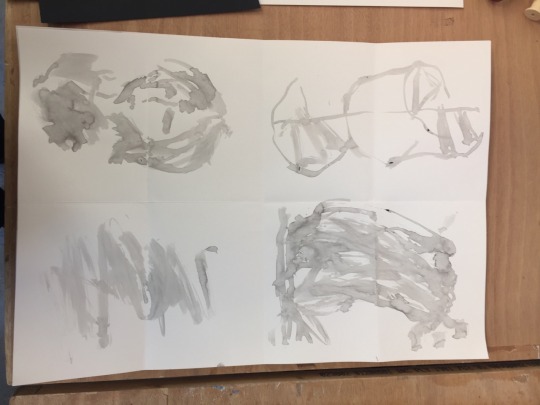

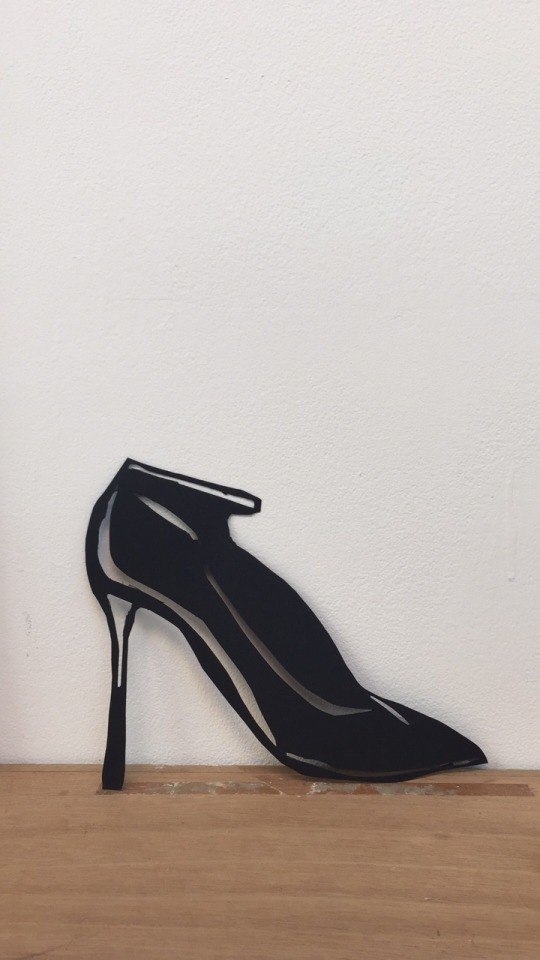
Drawing workshop
I tried new ways to draw different objects by hear any words in today's workshop, it was really fine when we done it. Sometimes when people hear a word like high heels, you may can draw a perfect by using a marker pen, however if you change to use newspaper like me, the drawing will be completed different.
Join this workshop, I may change a way to thinking about my project in the future, any materials use by hand may easy, but way not to change a way. Maybe it will have totally different view.
0 notes
Text
Theory: Analysing Images and Objects
Visual impacts form different medium in every daily life, also it can influence people’s mind by some gender stereotypes advertising. As noted Stuart. Hall (Stuart. H, 2013, p. 314) implies that human's sex, gender is in fact culture signifiers compose, cannot reflect gender definitions, meanings and identities. That is to say, culture constructs the gender stereotyping. This essay will analyse the meaning from the image of sexism against in the gendering stereotypes. Using an image from advertising for Versus Versace (Torbjorm Rodland, 2016). Then it will describe the general understanding of the image, then will explain how this adverting image shows the gender stereotyping by use sexism against.
There is an emblematic over feminist adverting image. In the image we can see the background is a suburban style garden with some evergreen plants. The middle of the image there is a large green ceramic tile swimming pool with fall water, the left side of inverted reflection in water is show an expansive diaphanous villa residence. The foreground of this image is the man with ferocious red face lie on the border of swimming pool. The dressed by he is ceremonial, we can see the sky blue thin with striped shirt and gloomy gray linen blending cotton smart suit, therefor, the diamond lattice gold colour silkiness tie. Move to the top of this image, the women wear high block heels, with circular charm ankle strap from Versus Versace spring and summer 2016. It is all made by matte dark black calf leather, the ankle straps with circle charm and it is open-toe sandals. This lady’s foot in congestive by ware this high-heeled, also the toes are congested, however, all her toenails polished to claret. At the bottom of this image is the focal point, the women is step on the men by full strength, also behind of the heel, the men looks uncomfortable and embarrassed in the perfect sunny day. Overall, the image conveyed is of feminism, independence and authority.
The image conveyed using a variety of techniques, the choice of colour (various bules and marron red); the natural sunny lighting; the gradient composition with impregnable movement. Although, seen from different perspectives, the calm water in swimming pool illustrates a softness and nature scene. The perception of colours from image can implies not only gender, age, also state of health (Paula, K. 2014). Moreover, the cold bright colour clothing and warm dark colour face both from the men, the face colour changed by the women step on his body, it connotes a sense of inconsistent gender identity. Because of the things thought to be offensive by the women, it could be sexism against to the men. In fact, the influence of gender issue from the image by the difference of eyeshot (Maurice, P. 2014), and the angle of camera lens determine passions from different gender. The image is bold and strong sexism against by the colour and the movement.
The strength of the image is the distribute authority by the sexism against for men, also the gender stereotypes is uncommon. The environment around shows a sense of abundant property, in addition to implies the happiness human relationship. However, the right side of this image, the men’s face parallel to the women’s sole and her heel perpendicular to his chest, it represents extremely hostile of sexual slurs. In addition, the men’s body is almost fall into the floor, in the left of the advert there is another women’s finger in this composition, it means the unequal distribute by different sex, also implies the strength femininity by contrast the powerless the men.
This essay has demonstrated that image not only convey messages, but that they can influence people’s mind of gendering stereotypes in specific ways; in this case through the choice of colour, the sloping visual angle by the men and women, and the composition of the image. It has also explored how the sexism against in image is employed to convey meaning the independent female feature, as an example, an image taken from an advertising campaign for an accessories produced by Versus Versace. In conclusion, it can be seen that there is subtle influence by using sexism against with gendering stereotypes in advertising.
References Stuart, H. (2013, p. 314) Representation, 2edn (Accessed: 20 July 2016). Torbjorn, R. (2016) Advertising decoded: The neon demon, Dazed, Vol IV, spring and summer (Accessed: 15 July 2016). Paula, K (2014) The impact of colour in advertising, marketing, and design, Available at: https://www.blurgroup.com/blogs/group/the-impact-of-colour-in-advertising-marketing-and-design/ (Accessed: 19 July 2016). Maurice, P. (2014) Advertising and the inversion of the male gaze. Available at: https://www.researchgate.net/publication/247521938_Negotiating_Masculinities_Advertising_and_the_Inversion_of_the_Male_Gaze (Accessed: 20 July 2016).
1 note
·
View note
Photo
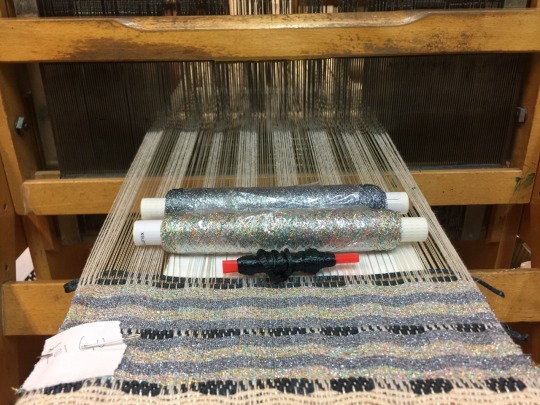

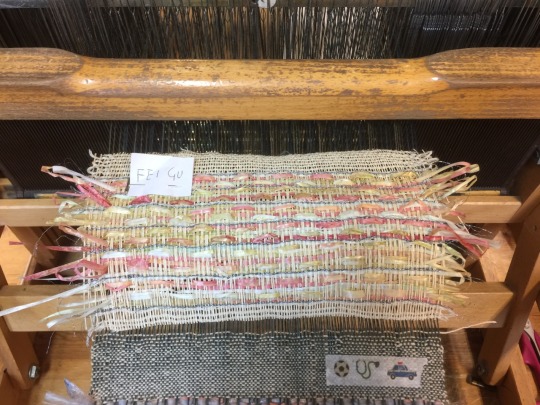
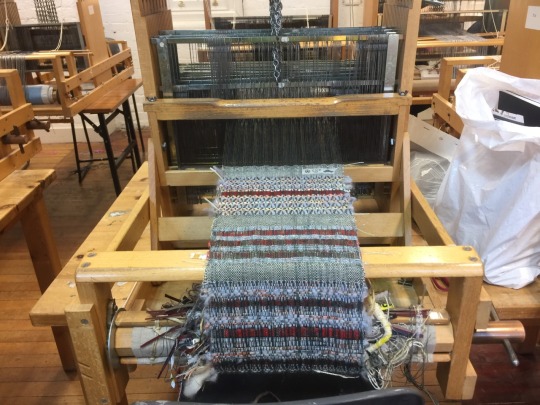


Technical Block 4 -weave 2
The last week for all technical block, I tried to make as more as I can, the samples I made was not that perfect, but I enjoyed the process of weave, it's just like to talk with an old lady. My mom is my first weave technician, she always told me, weave could not be fast. Just two weeks in this block, all my samples were not that great size when it handing, however the patterns I made was my favourite.
Different materials worked together in this process, all yards cross over the shafts. I would like to continue to study with this wood machine.
0 notes
Photo

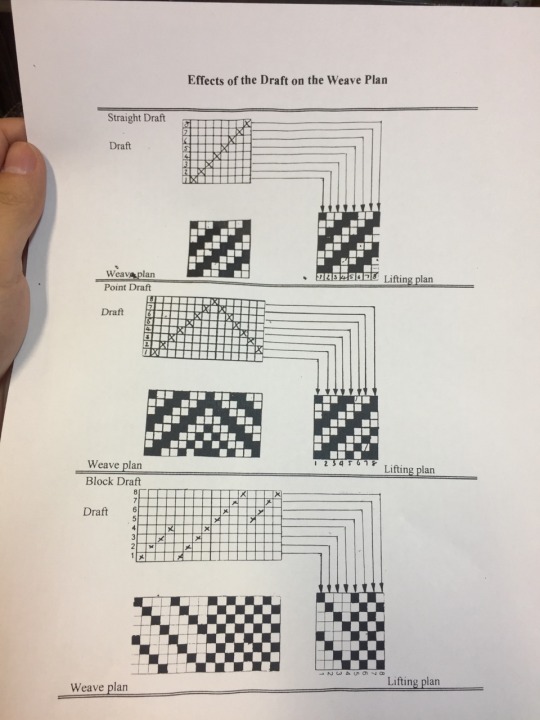
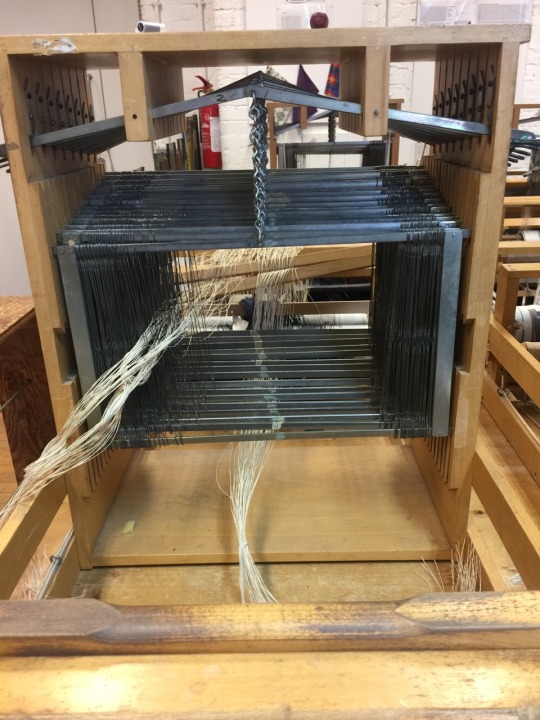


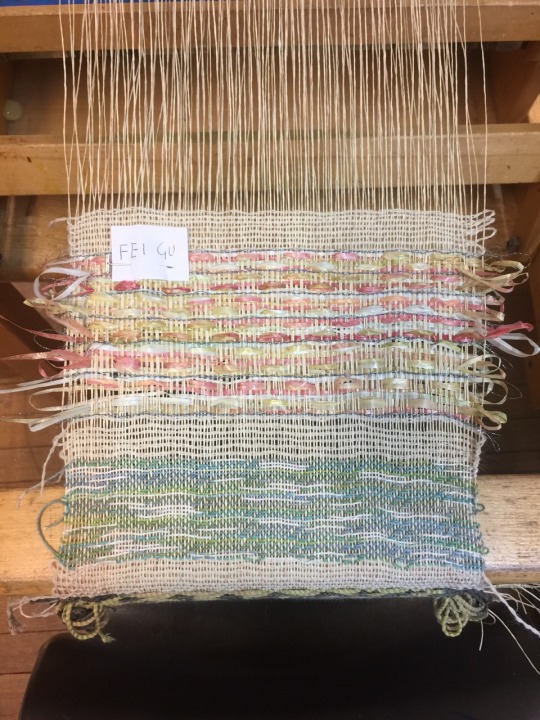
Technical Block 4- weave
After I saw the weave machine that all wood shelfs in the workshop. Back to the really beginning of this week, let to know all materials again, not only the outlook, more details about the texture and how does different yards work with other.
In case, the first week didn't work lot with the machine, just warped the yards into shafts, and did some simple weave.
The materials I choose in this section were all from hand weaver studio. All yards in the stop are perfect to use.
0 notes
Photo
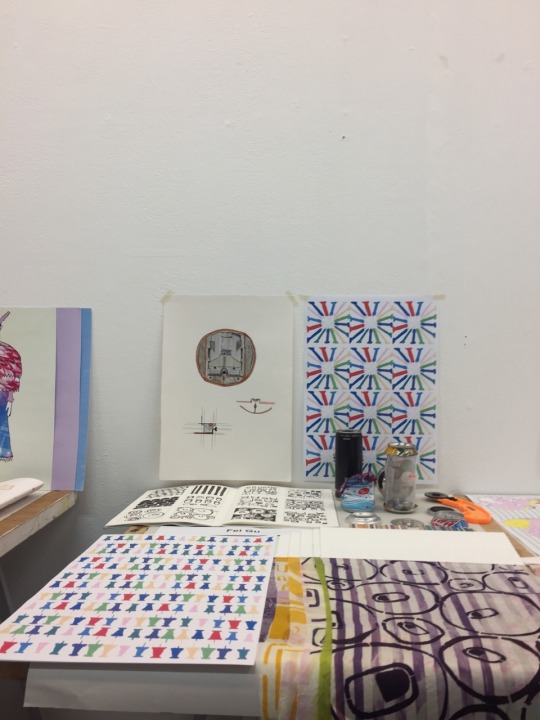
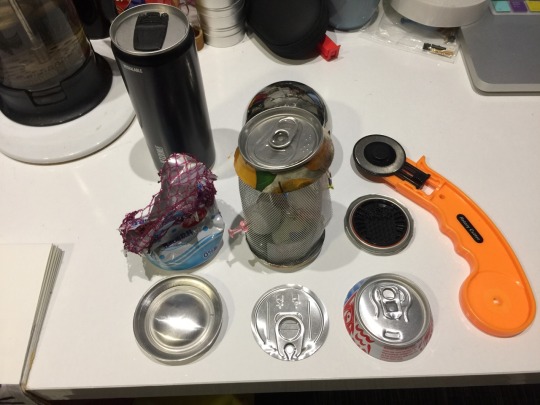
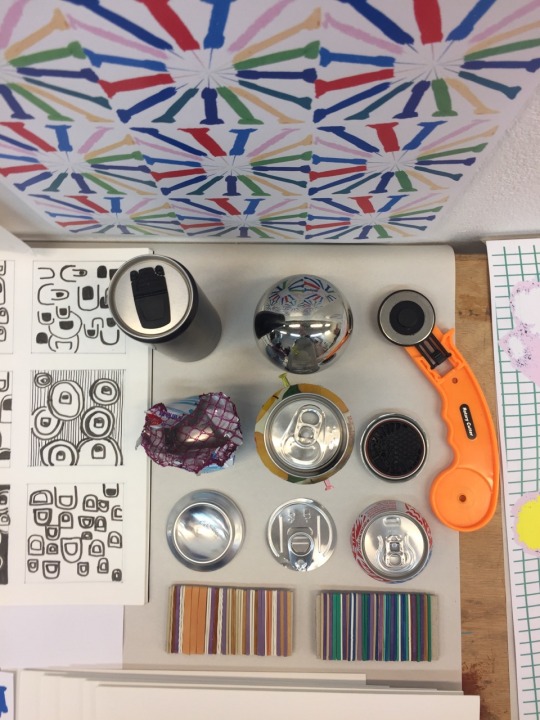

Technical block- Print2
The second week of this block we have to focus on photoshop, all images should be scene into computer, this is my first time to use photoshop, even it was really hard for me at the beginning, however all technicians are really nice. As you can see, I used the simple skills to transferred the patterns.
We also did the fashion illustrated, but in my case I don't think it could show on the handing, my don't have quite strong photoshop skill, I'll continue to study it.
Digital study is my worst part in this part, I'll pay more tantion to learn it, hopefully in my next project I'll be able to use it.
0 notes
Text
Theory Lecture: Globalisation Task
Read: Barker,C.(2008)'A New Wolrld Disorder?' in Cultural Studies: Theroy and Practice Sage, pp. 141-147.
There has been much discussion of whether globalisation in fashion industry makes world where everything looks the same or more creative expression. As fashion becomes more globally, designers may find difficult to maintain their characteristic and avoid become homogenisation (Zhang, 2015). However, Blakley (2010) shows that global fashion design changes by the hybrids cultures, and designers from different backgrounds to share and create new fashion trends. While, the world becoming smaller, the pace of change in fashion is increasing, it has become more heterogeneous in postmodernism fashion (Berger, 1998, p. 194). This essay will demonstrate that sharing of ideas and cultures creating a greater range of expression; because of globalization, different cultures have become hybrid and more design opportunities have been produced, which also influenced by postmodernism. In order to demonstrate this, first, it will be shown that globalisation cause the fashion product becoming homogenisation. Then will present that globalisation allow the designer to exchange the experiences and ideas more fluidly in the multicultural environment. Finally, it will describe that the globalisation of fashion encourage within the local context as the impact of postmodernism.
One reason of the world where everything looks the same, may because of the designer in fast fashion brands to create homogenisation low-cost collections that was inspired by high-fashion brands, then sale in stores around the world, it made people living in different countries but wearing same clothing. It is because fast fashion brand refers to clothing lines that produce, package, and distribute the most up to date fashion trends, as quickly as fast food (Lee and Elena, 2011, pp. 76-90). For example, the biggest fast fashion company Zara, its collection in 2014 was inspired by Christian Dior, Balenciaga, Celine and Kenzo’s 2014 spring and summer collections, and its collection came early then all high-fashion brands (Rickey. 2014). Although globalisation has had contributed to the homogenisation in fashion industry from international fast fashion brands, like H&M (Steele, Melissa and Susanne, 2015). Lea-Greenwood (2013. p. 143) reports that H&M considered a global fast fashion brand as it trades around 2200 stores in over 40 countries, seen people live in different countries, also can buy a same clothing in different H&M stores. According to Blum and Ibbetson (2015. pp. 498-500), fast fashion is showing an agility of anything new in the fashion trend. Indeed, the increasing size of homogenisation of fast fashion industry makes the base of global fashion market similar (Bruce and Lucy. 2006. pp. 329-344). Therefore, it is clear that the problem of the homogenisation formulate by fast fashion makes the global market comes to the same.
However, global fashion industry do not only include the fast fashion, but also have other high-fashion brands and individual designer companies, their branding strategy should not be inspired by each other, but create from different their cultures and ideas; these group of brands are giving customers more options. It is difficult to show the same fashion trend in fashion week by different leading brands, each brand have different branding strategies that makes the great range of option in this market. For example, Vivienne Westwood has a strong brand identity that has the 1970s punk era, with historical twists throughout designs (Posner, 2011). Menkes (2013) point out that designer in high-fashion brand should have to embrace different cultures, which makes more choice of the fashion trend for next six months. Giorgio Armani’s high fashion style in his Armani Prive collection in 2013 summer, designer was inspired by different cultures and fabrics, such as mélange of fez hats, also Middle Eastern dresses over pants and batons wound with fabrics in Egyptian, Indian and Turkish (Menkes, 2013). It is true the leading brand produce more options within the multicultural condition, which as result of globalisation.
Furthermore, there is possible connection between postmodernism and fashion industry that create the heterogeneity and multiformity of global fashion market. According to Irvine (2013) postmodernism interpreters of cultural hybrids that emerge from mix the categories of “high” and “low” cultures, and develop in regions the local identities seek definition against. At the end of the twentieth century, Galliano’s fashion collections often created from different cultures, such as the human tableaux set in Turkish harems, Cairo markets and Hindu temples, or dance spectacles with snake charmers and Indian pipes (Evans, 2003, p. 29). Designers use all ideas or cultures are not original, as Twain (1903) points out, “substantially all ideas are second hand, consciously or unconsciously drawn from a million outside sources.” but they recreate it to their own styles, that could help the fashion industry comes more diverse. Miuccia Prada, who is a well know Italian fashion designer, one times when she went to a vintage store in Paris, she bought Balenciaga jacket, then replicate it for her own style (Blakley, 2010). Additionally, popular culture cross the subculture invented the postmodernist fashion become more creativity (Davis, 2007. p. 18). For instance, one breathtaking couture spring and summer 2014 show from Maison Martin Margiela, which was not only a showcase of craftsmanship and inventiveness but it was influence from something of a love letter to vintage (Blanks, 2014). This clearly demonstrates that postmodernism inspired the global fashion industry according to their local context becomes more diversity and multiformity; it is also create great range of fashion market.
In conclusion, this essay has attempted to demonstrate that sharing of ideas and cultures creating a greater range of expression; because of globalisation, different cultures have become hybrid, more design opportunities have been produced, which also influenced by postmodernism. Indeed, global market became similar because the fast fashion industry has been homogenised. It is also true that leading brands has been created by multicultural condition, which created more options. Globalisation of fashion industry encourage local context as the impact of postmodernism, it become more diversity. Globalisation causes the fashion industry and it will become to more creativity by the hybrid cultures and part of postmodernism effects, which will not only influence the leading brands but also permeate to fast fashion brands.
References
Berger, A. A. (1998). The Postmodern Presence: Readings On Postmodernism In American Culture And Society. p. 194. London. Walnut Creek. Blakley, J. (2010). "Transcript Of "Lessons From Fashion's Free Culture". Ted.com. Available at: https://www.ted.com/talks/johanna_blakley_lessons_from_fashion_s_free_culture/transcript?language=en#t-51278 (17 Aug. 2016). Blanks, T. (2014). “Spring 2014 Couture Maison Margiela”. Available at: http://www.vogue.com/fashion-shows/spring-2014-couture/maison-martin-margiela (17 Aug. 2016). Blum, J. and Ibberson, S. (2015). "Rihanna In The Right Place At The Right Time: Rihanna V Topshop Passing Off Ruling Upheld". Journal of Intellectual Property Law & Practice 10.7: pp. 498-500. Available at: http://jiplp.oxfordjournals.org/content/10/7/498.abstract (17 Aug. 2016). Bruce, M. and Lucy D. (2006). "Buyer Behaviour For Fast Fashion". Journal of Fashion Marketing and Management: An International Journal 10.3: pp. 329-344. Available at: http://www.emeraldinsight.com/journal/jfmm (17 Aug.2016). Davis, K. C. (2007). Postmodern Texts And Emotional Audiences. p. 18. West Lafayette, Purdue University Press. Evans, C. (2003). Fashion At The Edge. p. 29. New Haven: Yale University Press. Lea-Greenwood, G. (2013). Fashion Marketing Communications. p. 143. West Sussex: Wiley & Sons. Lee, J. and Elena E. K. (2011). “The US And Japanese Apparel Demand Conditions: Implications For Industry Competitiveness”. Journal of Fashion Marketing and Management: An International Journal 15.1: pp. 76-90. Available at: https://www.researchgate.net/publication/235271141_The_US_and_Japanese_apparel_demand_conditions_Implications_for_industry_competitiveness (17 Aug. 2016). Menkes, S. (2013). "A Playful Mix Of Cultures". Available at: http://www.nytimes.com/2013/01/24/fashion/24iht-farmani24.html?_r=0 (17 Aug. 2016). Posner, H. (2011). Marketing Fashion. 1st edn. London: Laurence King Pub. Steele, V. Melissa, M. and Susanne, B. (2015). Fashion Underground. London: Yale University Press. Irvine, M. (2013). "The Po-Mo Page: Postmodern To Post-Postmodern". Available at: http://faculty.georgetown.edu/irvinem/theory/pomo.html (17 Aug. 2016). Rickey, M. (2014). "HMMM... ZARA SHAMELESSLY COPY EVERY MAJOR FASHION PLAYER - Fashion Editor At Large". Available at: http://www.fashioneditoratlarge.com/2014/03/zara-copying-dior-balenciaga-prada/. (17 Aug. 2016). Twain, M. (1903). "All Ideas Are Second-Hand: Mark Twain On Plagiarism And Originality, In A Letter To Helen Keller". Available at: https://www.brainpickings.org/2012/05/10/mark-twain-helen-keller-plagiarism-originality/Web. (17 Aug. 2016) Zhang, K. (2015). “How Does Japan Prevent The Homogenization Of Fashion? – Shift London”. Shift London. Available at: http://shiftlondon.org/fashion/japan-prevent-homogenization-fashion/ (17 Aug.2016).
0 notes
Photo






Technical Block 3- Print
First week of Print was the dyeing and screen print. It was really nice to learned this technical skills, even for the dyeing part just like doing experiment in the laboratory. After I immersed silk to the dye liquorice, only a few seconds all colour come on the fabrics. I tried dyeing seam fabric at different times, like 10 seconds, 30 seconds and one minute, all looks different. I think it's is the most interesting part of this block.
For the screen print, I was learn when I doing my foundation year, but just basic skills. The most difficult part in this section was to make the ink, is seam as dyeing fab,I need make sure each dye stain, and I need follow the steps, otherwise the ink shouldn't be work for the fabrics.
Only three days in the workshop, everyone in the space all worked really hard, if I have enough time, I think I'll get better samples then now.
0 notes
Text
Theory: Postmodernism task
Read: John A. Walker (2001)‘Cultural Pluralism and Post-Modernism’ from Art in the Age Mass Reproduction Pluto Press, pp. 83-86
Joing the last few weeks, I asked question by myself, what is the differernt between modernism and postmodernism, after this friday’s lecture, i got the answer.
A term used to define and describe a wide range of visual culture since 1970s, including art, architecture, graphic and product design; fashion design Through these practices we can see responses to mass production, consumerism, identity, gender, and to Modernity. That rejected the stylistic ‘eclecticism’ of 19th century art and design on the grounds that a new age of machines and technology had be born. Since a new age had dawned, the Modernists insisted on a break with history and tradition: novelty and originality were important values.Modernists rejected decoration and ornamentthey were the left-overs of ‘ primitivism‘(Adolph Loos, Ornament and Crime) and were unnecessary. Also modernists rejected national, regional and vernacular styles and claimed that the principles of mondernism were universally applicable.
Modernist designers were committed to producing art and design of the future: often inspired by socialist ideals, they wished to sweep away the old order to create a ‘brave new world’ which would improve the human condition (society). Design for overalls which neutralise class, status, and gender, and everyone becomes a worker in the new society. Removal of all references to history – the new world. The Modernists saw themselves as ‘the experts’ who ‘knew best’ and consequently, they tended to impose their solutions on the masses without regard to popular taste or preferences.
The tense relationship between high culture and popular culture is the ‘great divide’ (as noted by Andreas Huyssens 1986), which Postmodernism has challenged through various cultural means since the late 1950s, though not articulated as such till the late 1970s. The gap was gradually closed: the great divide between what was considered high culture - the arts, and popular culture was no longer so distinct.
It is not always clear whether Pop artists were critical of, or celebrated consumerism in their depictions of mass & popular culture. What is important is that they acknowledged its powerful presence within culture and society. Andy Warhol Marilyn 1960s.
The Modernists believed that each age had only one style. However,Postmodernist favour a ‘plurality of styles: eclecticism, hybrid styles, no-one single style is dominant.
Postmodernism can be said to describe the emergence of a social order in which the importance and power of the mass media and popular culture means that the mass media and popular culture govern and shape all forms of social relationships.
The positive about postmodern design in our world is the design should have any meaning for the product, however, some of the artist work does have any meaning or the mass production.
0 notes
Photo

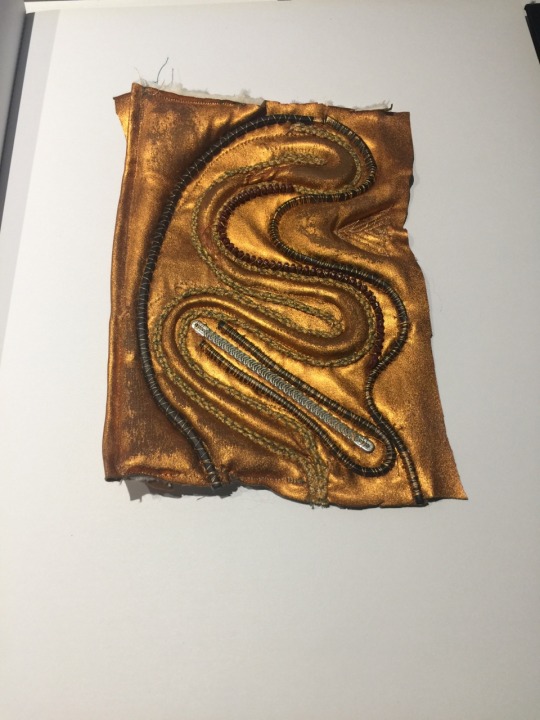

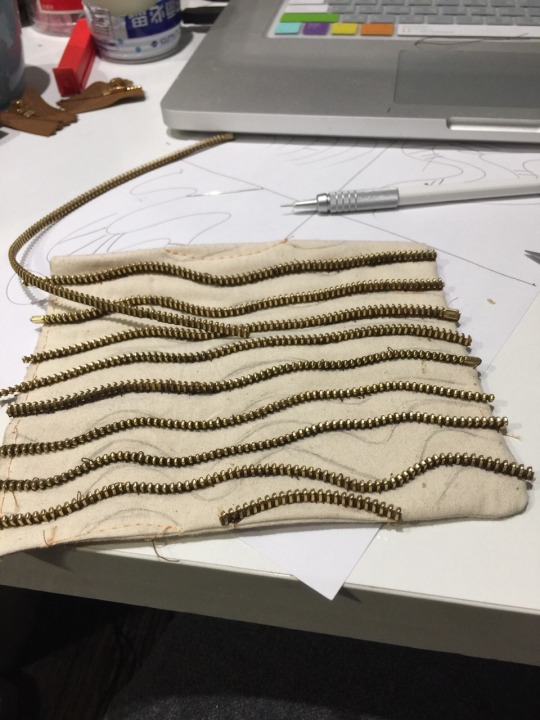

Technical Block 2 -Stitch
Second week of stitch, after I learned how to work with different types of fabrics I would like to continue to study. Last two weeks wasn’t that free, we didn’t have time in the workshop, some reason for me, Casue all my samples need work by hand, couldn’t use machines. Even Idon’t get feedback yet, but I enjoyed to work with drawings.
No matter how was the feedback, I would like to choose stitch, just because the materials, also the visual research before I started to make samples.
0 notes
Photo
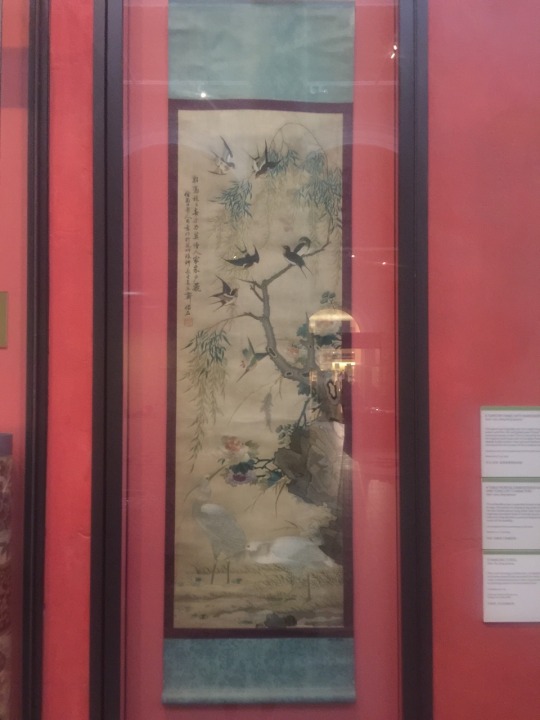
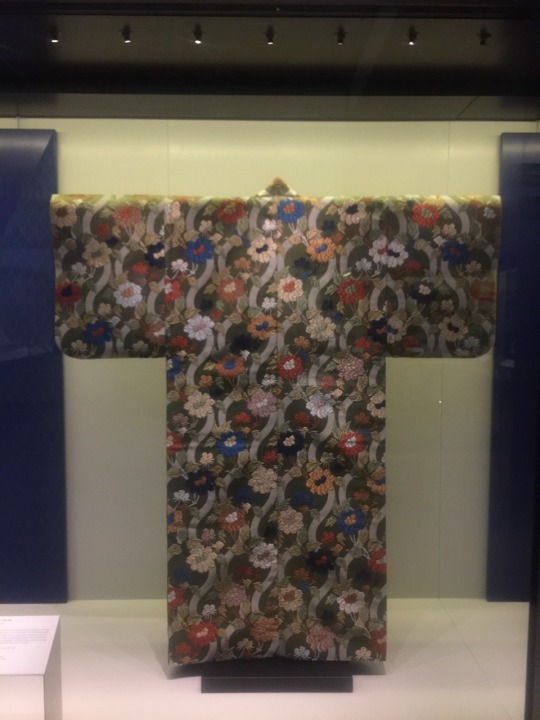

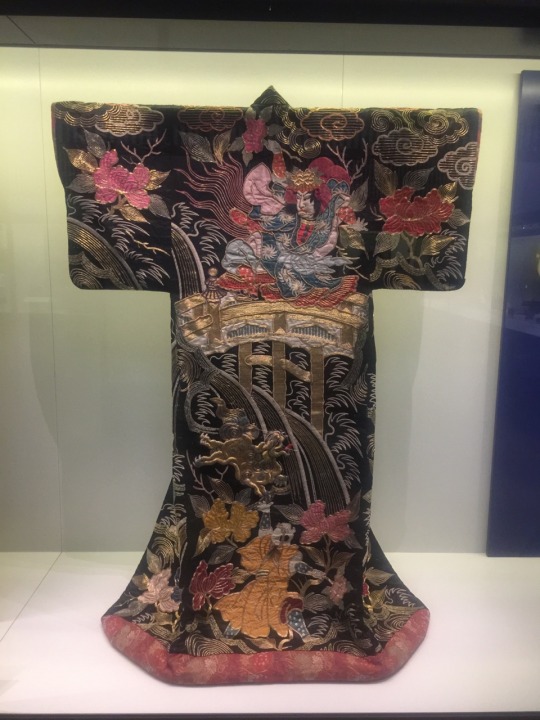

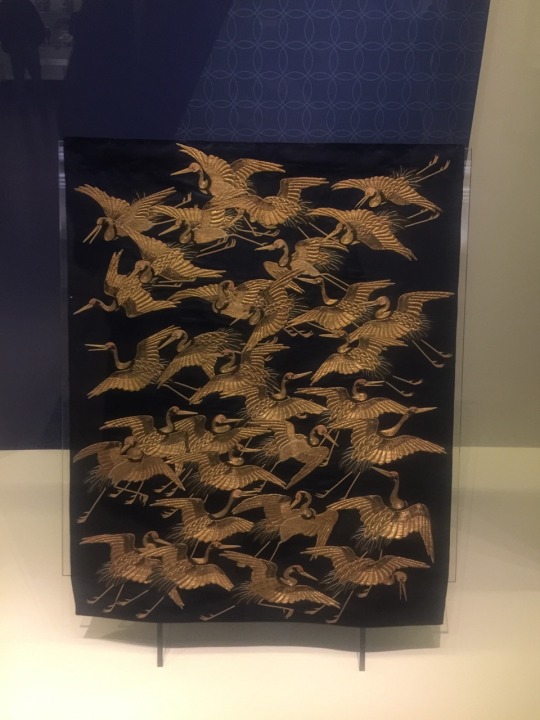



Museum visit
Went to the V&A in Sunday, I really like Japanese culture, that's why I choose this images for the task, I think Japanese traditional collection have many interesting could say, also when u don't understand the language, you can find the best way to learn about Japan.
0 notes
Text
Theory: Museum/Gallery visits and ‘tasks’
Read du Gay, P., Hall, S., Janes, L., Mackay, H., and Negus, K. (1999) ‘Making Sense of the Walkman’ in Doing Cultural Studies: The Story of the Sony Walkman Sage Benjamin, W. (1970) ‘The Work of Art in the Age of Mechanical Reproduction’ in Illuminations Fontana
After i went to V&A i select 4 examples of textiles, all from the space of Japan. The 'languages' has being used in this 4 samples called Japanese hand embroidery. All sample could be weitten languages also visual languages, beacuse of the pattern of the kimono, some of it have word embroidery someof it just used tradition japanese patterns. For example, Buddhist robe(kesa), this sumptuous robe is woven predominantly with gold, which would habe shimmered in the light of the temple candles. Like most kesa made during the Edo period(1615-1868), it was assembled from specially woven fabrics made in Kyoto's Nishijin textile district. The Two Buddhist robes displayed here were acquired by T.B.Clarke-Thornhill, who served at British embassy in TOkyo in the 1880s. This kesa was made buy Figured silk.
As textile visual language worked with this kesa, which are draped over the left shoulder and under the right arm. Kesa are traditionally constructed from scraps of fabric, signifying the rags of poverty,but the opulence of most examples reveals the wealth of many religious establishments, The act of sewing together the pieces of cloth is a significant devotional putsuit. The parchwork nature of the finished garment is a symbolic representaion of the universe known as a mandala.
The flock of cranes decorating this gift cover(fukusa) converys wishes for long life and happiness. The lavish design suggests a wealthy donor. It is executed almost totally in gold-wrapped thread, which is attached to the surface of the fabric with barely visible red stitches. The wings of the birds are padded to enhance the three-dimensional effect. The embroidery looks particularly striking against the dark blue satin ground.
What is 'culture'? "Is inextricably connected with the role of meanings in society. The fabric work with culture can be save it for longtime. By language, we do not only mean language in the strict sense of written of spoken words. We mean any system of representation- photography, painting, speech, writing, imaging through technology, drawing- which allows us to use signs and symbols to represent or re-present whatever exists in the world in terms of a meaningful concept, image or idea." -du gay
The presentation of gifts has always been an important social titual in Japan. Gifts were traditionally placed in a box on a tray, over which a textile cover, this is called a fukusa, was draped.
The gift sale on the gift shop such as postcard, print or other object that re-produces the original textile example. When one type of fabric should be mechanisation it will be not inculding the inside meaning, only the outside of the look like. the textile in printed books also like this, sometimes just for educatied. In case of copy thing, both of re-produces and copy are different.
Textile's message now changed because of its reproduced, most of fabrics made by mechanisation, the products come to the market faster then before, thats the reason. On the other hand, nowadays people all can wearing colthing on the street, but in the past it shouldn't be everyone.
0 notes
Photo

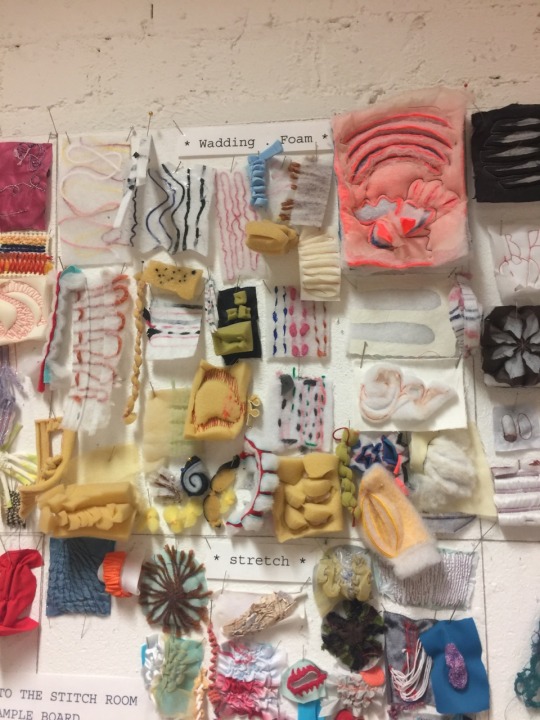
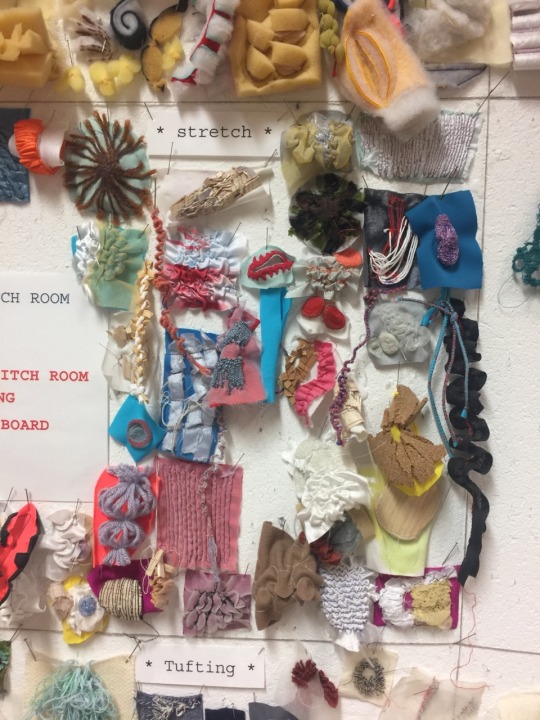
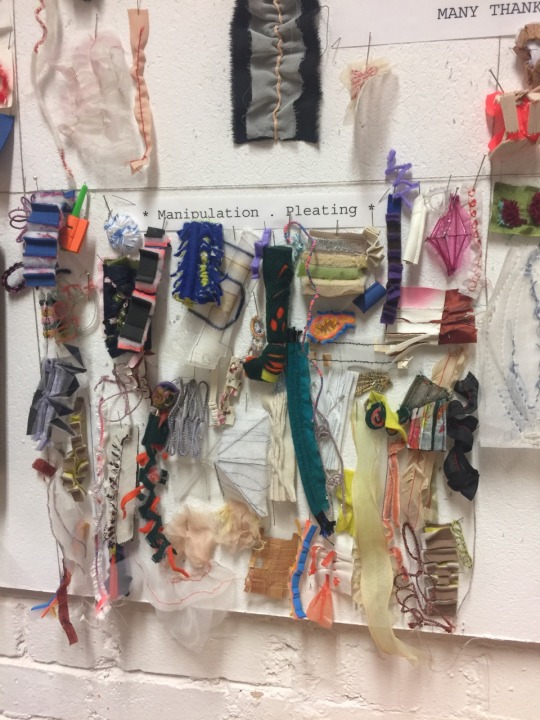
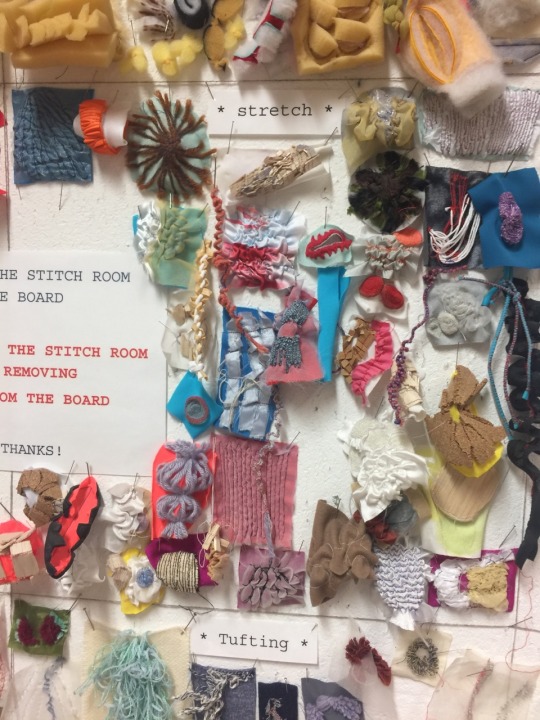


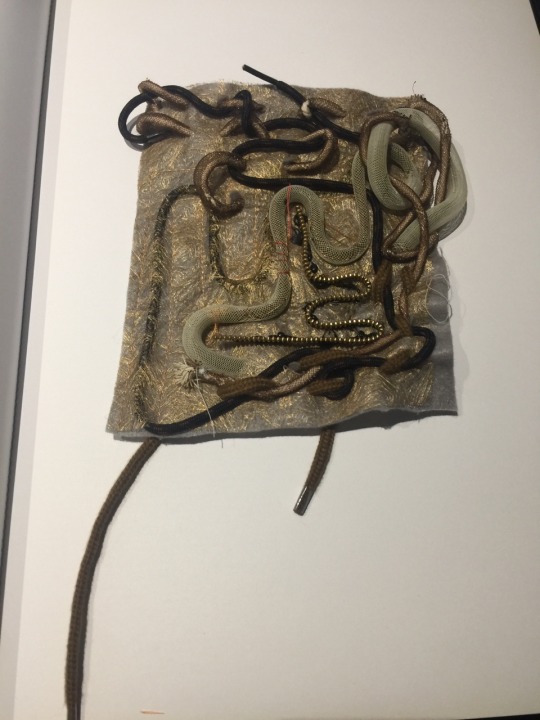
Technical Block 2 -stitch
This is the most interesting block I had to work with martial, my concept from the drawing I did in Britain museum. The turtor said any single sample should come from drawing, I like this attitude. As well as I started my drawing, I find the key of this block, it was not only about drawing, aslo need get the concepet between my drawing and fabrics.
0 notes
Text
Theory: Visual and Material Culture task
Read: Rozsika Parker (2010) ‘Introduction’ in The Subversive Stitch: Embroidery and the Making of the Feminine I.B Taurus.
As a textile student, to use fabric to show a story of image should be not that hard, the thing between stident and desinger just one different, it is the culture used, we may not easy to use the culture in our works, however desinger or artist can use it deeply.
After i went to Tate Modern i finded the Louise Bourgeois who was bron in France and worked in USA. '10 am is when you come to me 2006', it an artworks from 20 etchings with watercolour, pencil and gouache on paper. These prints shows drawings of Bourgenis's hands and those of Jerry Gorovoy, her assistant for over thirty years. The title refers to the daily time of Gorovoy's arrival at Bourgeois's studio or house. she was particulary fascinated by the physical contrast between her small hands and the large hands of Jerry Gorovoy. Louise's work considered subversive, as we can see the small hands with the big hands cross on the red backgroud, no matter which position, it all tell the tures of this world. The political and psychological losses that accrued have been compellingly documented by, for example, Sheila Rowbotham, Susan Faludi and Naomi Worlf.
Louise Bourgeois (1911-2010), 'Couple' made by 1996, Louise though the couple represented here appear to merge into each other. As in many of Bourgeois's works, male and female are combined in an ambiguous arrangement of body parts. For Bourgeois, handing indicates a state of uncertainty. 'Horizontality is a desire to give up, to sleep', she said. 'Verticality is an attempt to escape. Hanging and floating are states of ambivalence'. Another work from Louise call 'cell'( eyes and mirrors) made from steel, limestone and glass. This is one of several works in which Bourgeois reassembled doors and windowpanes to form small cells, The large marble eyes and the mirrors in this cell indicate that Bourgeois was thinking about voyeurism and surveillance. The mirrors reflect each other and the eyes in an endlessly probing insular circuit. The 'Legs' made by 2001 also shown this problems, these hanging fabric legs appear to represent a family: father, mother and child. Bourgeois spoke frequently of childhood memories that left a mark upon her imagination, and which re-emerged in her work as an artist. One of these memories was of encountering wounded soldiers and amputees during tht First World War. Her sister also had a medical problem with her knee and sometimes had difficulty walking. This suspended family of legs raises many questions about their imagined owners.
Sometimes, when people walk on the street, they will block them eyes to not see the black. As seam as the artist, they would like to find people's black when they need it, like i said, Louise Bourgeois she have her oun consider of the word'subversive'.
As a 'source of constraint' about textile arts, the meaning of textile arts should be seam as an artist of a drawing, both of works are showing an attitude of the life. From the textile way, source of constraint chould be the product, it shows the artist attitude, also when people buy this, they may understanding the meaning.
0 notes
Photo
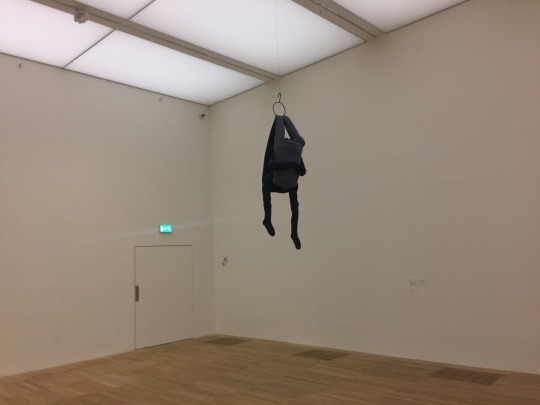
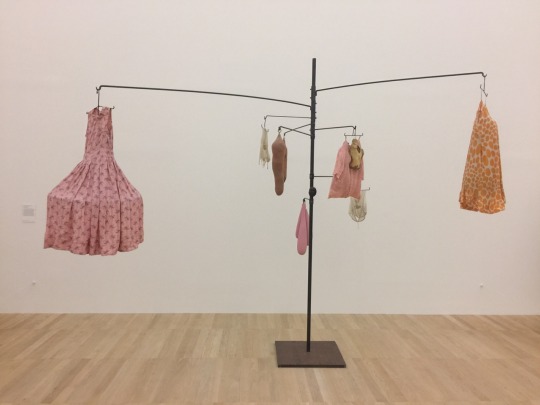
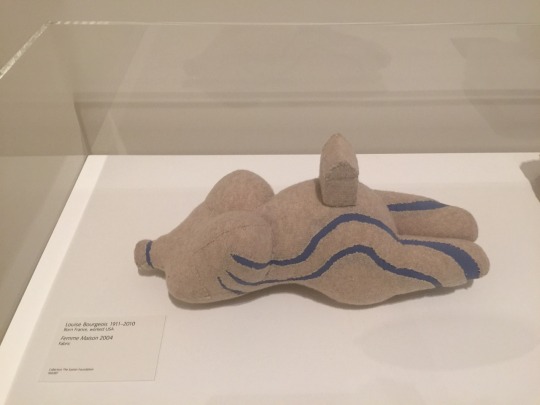
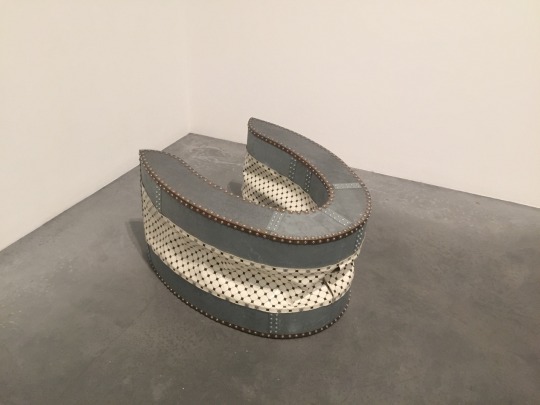


Museum Visit
Went to Tate Modern and examine the works on display by Louis Bourgeois, Phylidda Barlow, Sarah Lucas and Colin Self.
0 notes
Photo


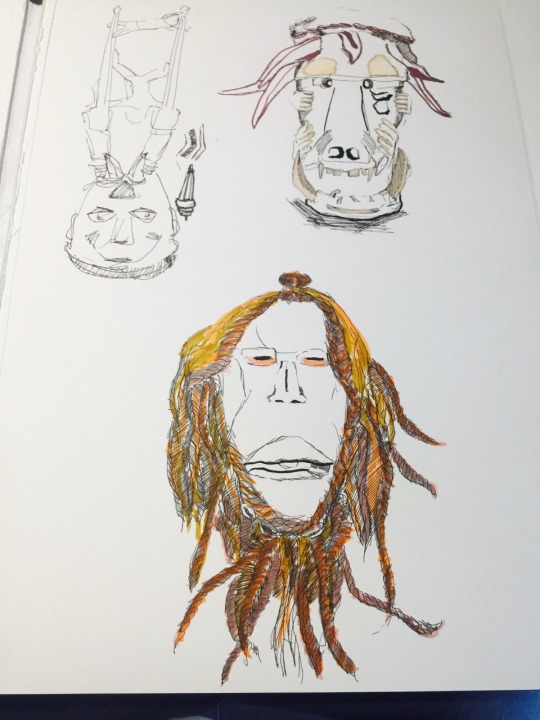


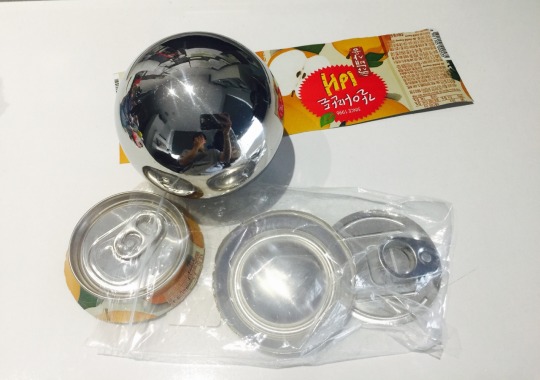

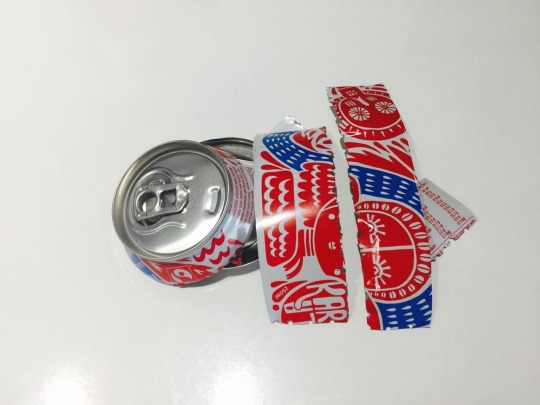

Drawing Workshop 2-2
After I visited the British Museum, I have to changed some object from my box, as u can see the can I choose and the top of the can, all ideal form Africa. They used different materials to make new products also some artwork, my drawing also shown it.
0 notes